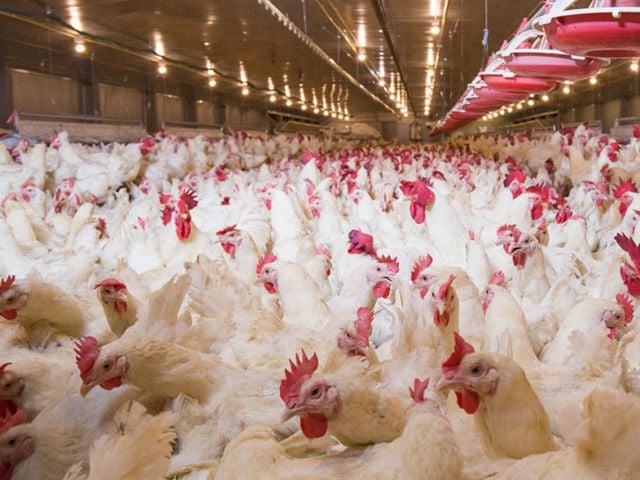On the eve of floor action in the House on the farm bill, a bipartisan gathering of Congressional staff ventured outside the Beltway the other day to visit Terry Ingram’s 220-cow organic dairy farm in Virginia’s Culpepper County.
With the House Agriculture Committee proposing sharp cuts to farm bill funding for agricultural conservation, Terry, along with the Organic Valley cooperative and the Environmental Working Group, wanted to show the Congressional staffers just how those programs work on the ground.
The Ingrams have worked for years with the federal Natural Resources Conservation Service to reduce polluted runoff from their pastures and to put up fences that allow Terry to move his cows around more frequently to improve soil health. Thanks to the Environmental Quality Incentives Program (EQIP) at the U.S. Department of Agriculture, Terry has transformed the Ingram farm into what he had envisioned when he started.
“With help from the Conservation Service, we put in fencing and several thousand feet of laneways so the cows can walk from paddock to paddock, and we ran water lines to every paddock,” he said. “As a farmer, I’m learning new lessons every day. One of the most valuable is that healthy land produces healthy food. Once you experience what it’s like to farm organic, your eyes open to how abundant nature is. I am in total awe of it.”
So it’s more than a little troubling that programs such as the Incentives Program are under fire right now in the House farm bill (H.R. 1947), which would slash conservation programs by $4.8 billion on top of the $2 billion cut already inflicted by the government-wide budget “sequester.” Voluntary conservation programs are incredibly popular with farmers like Terry in all parts of the country because they provide them with practical assistance, and they benefit consumers by giving them cleaner air and water.
That’s especially important right now because – as detailed in EWG’s and Defenders of Wildlife’s “Plowed Under” report – high commodity prices and unlimited crop insurance subsidies are encouraging farmers to plow up millions of acres of wetlands and prairies. As a result, agricultural runoff is polluting rivers with huge amounts of fertilizers and pesticides – the exact thing that Terry is trying to prevent with the help of EQIP. That’s help that Ingram and other farmers who want to protect the environment will find even harder to get if the House Ag Committee’s bill passes, because the Incentives Program is already oversubscribed.
The House farm bill also has no requirement that farmers who receive insurance subsidies adopt basic environmental protections, the policy known as “conservation compliance.” A bipartisan amendment has been filed to match a provision in the Senate-passed farm bill, which – although far from perfect – wisely recognized that crop insurance is the primary way taxpayers support farm income. This important quid pro quo between taxpayers and farmers should apply to crop insurance premium subsidies.
It’s not too late for Congress to do the right thing – they must resist efforts to weaken or cut funding to the conservation provisions in this year’s farm bill.
As we have pointed out again and again, Congress can achieve significant savings and avoid cuts to conservation and nutrition programs by making common-sense reforms to the bloated crop insurance program. Modest changes to limit who’s eligible for insurance subsidies and how much they can receive, combined with other sensible reforms, could entirely eliminate any need to cut programs that protect the environment.


